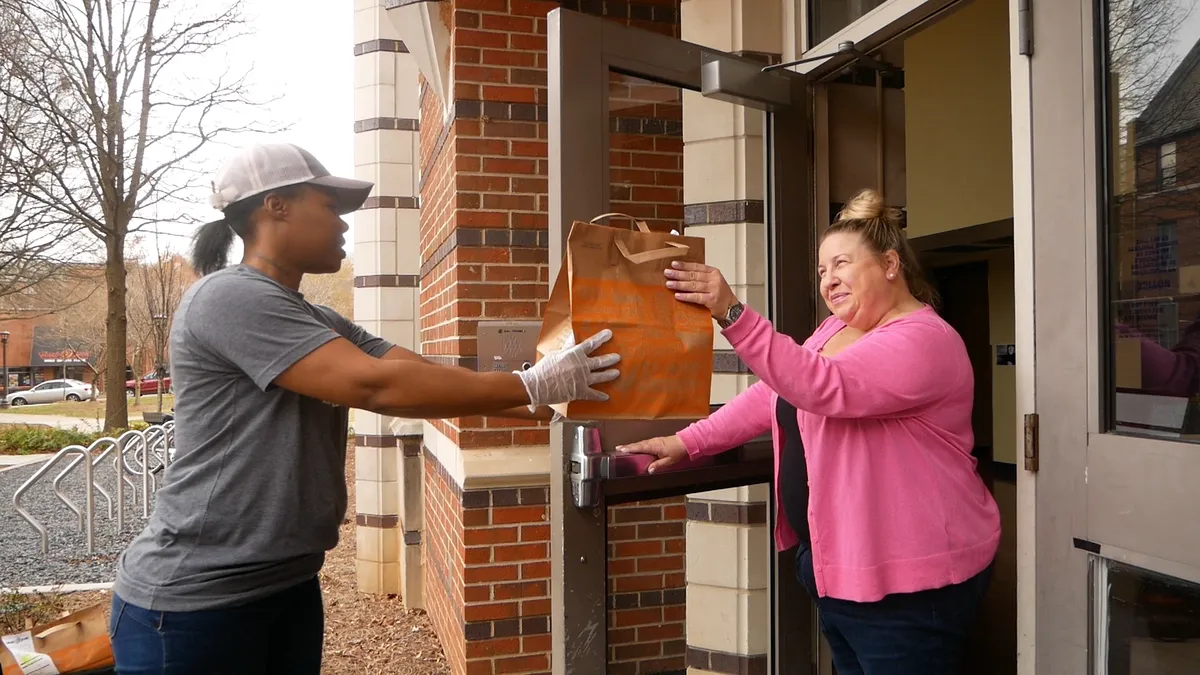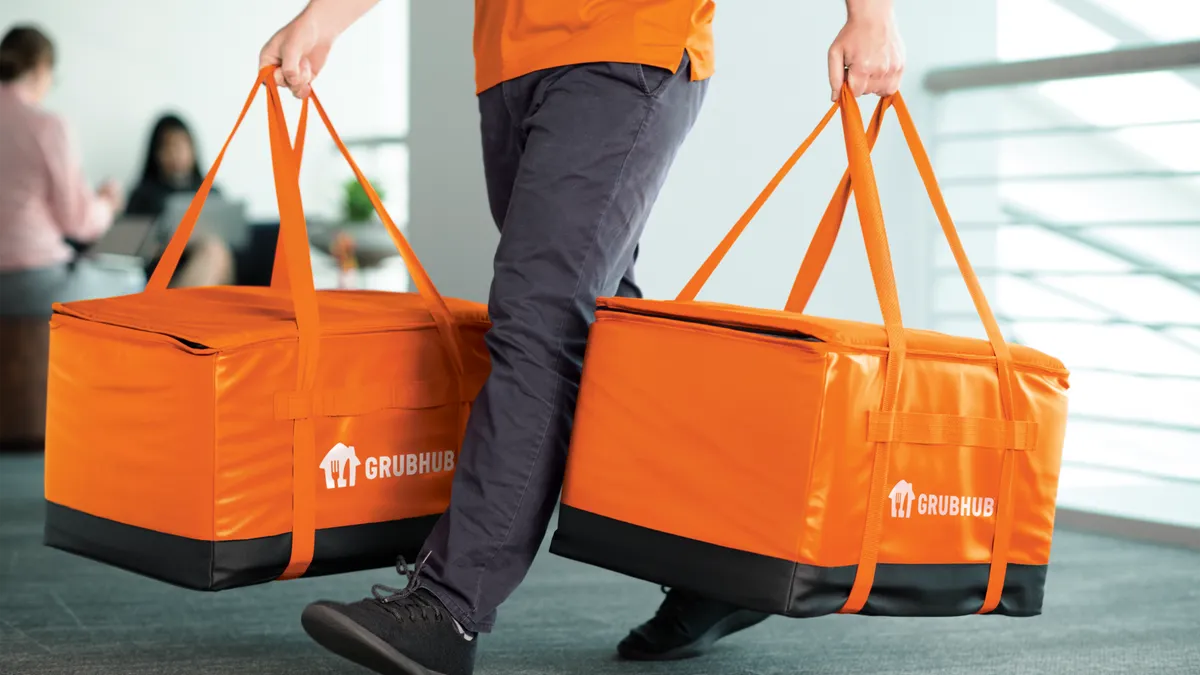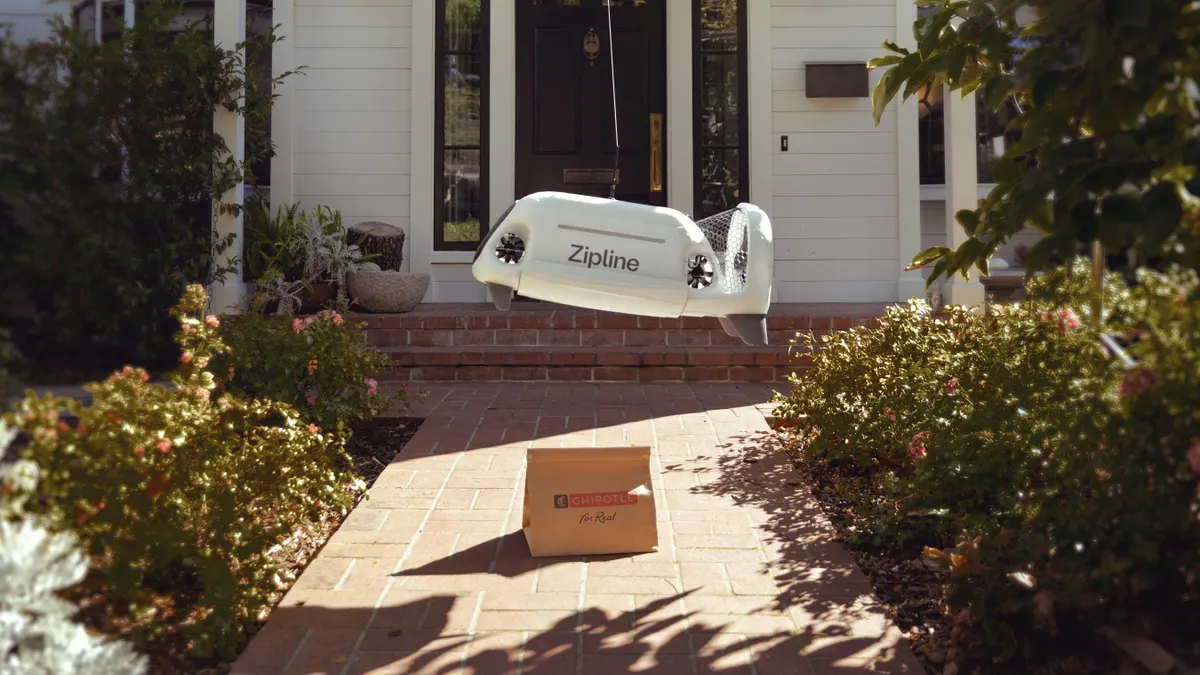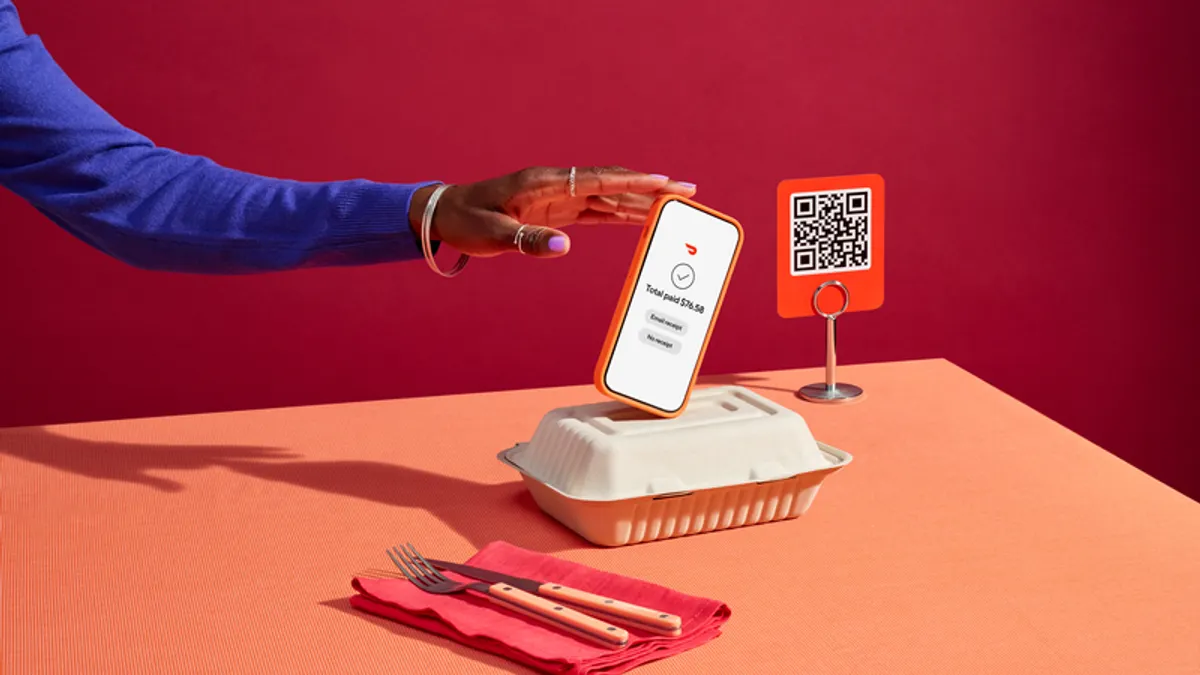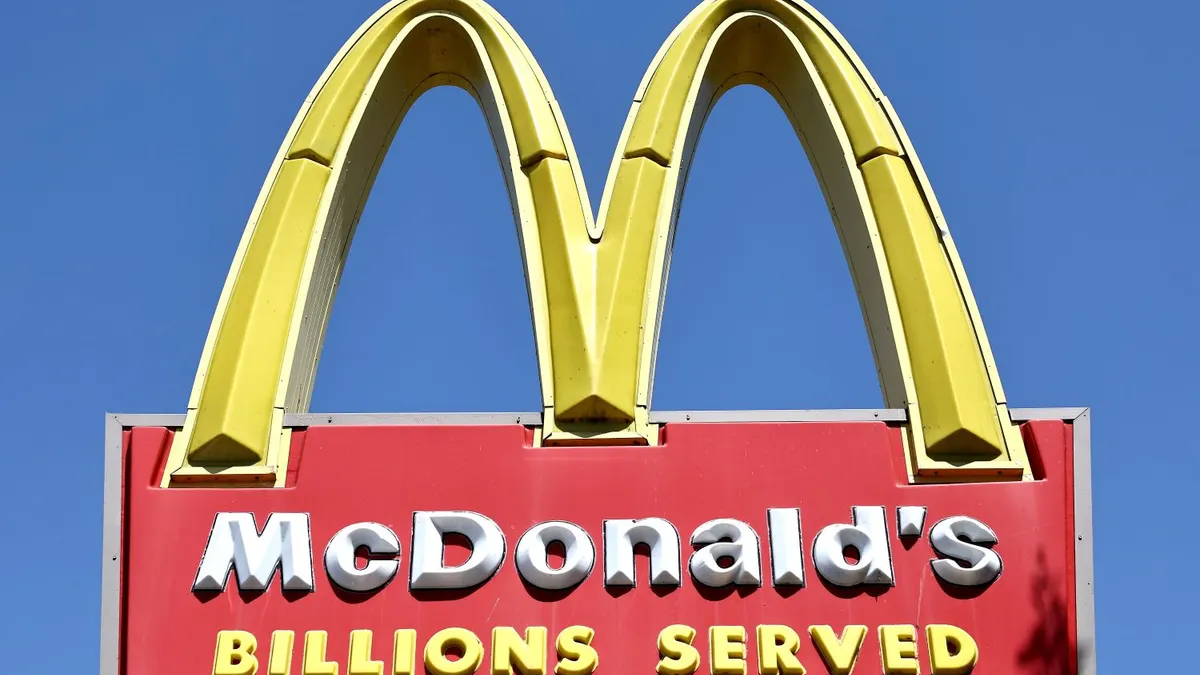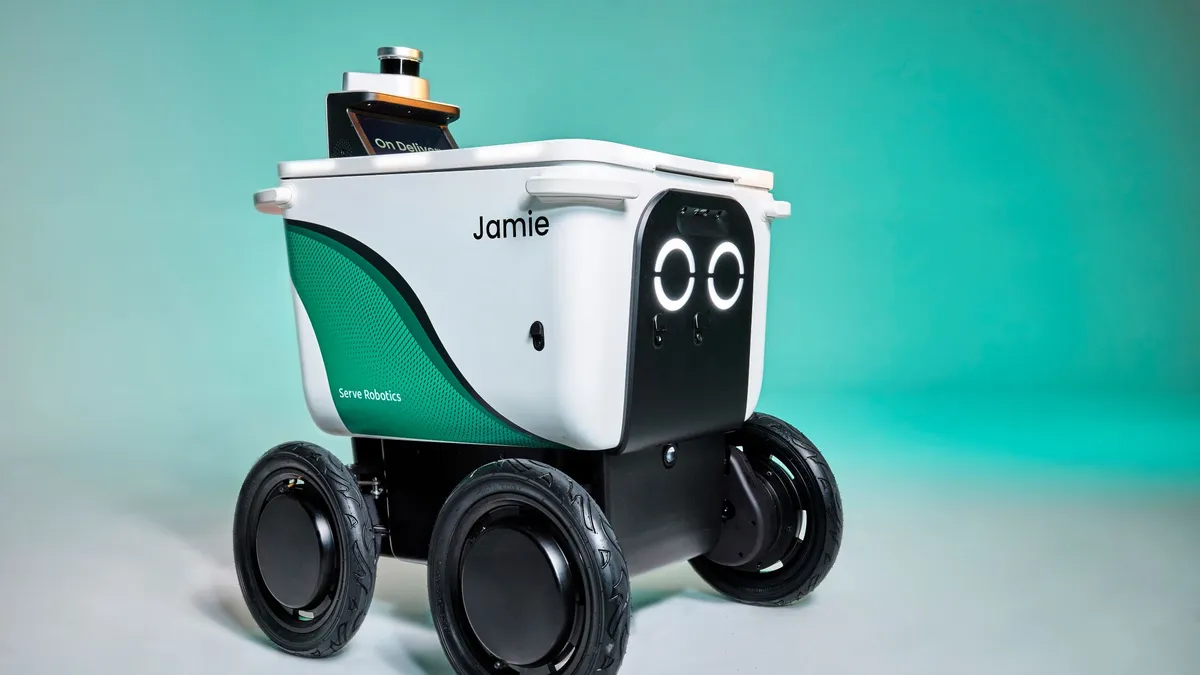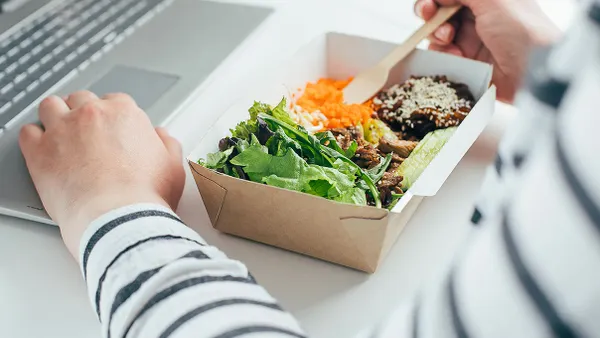Before the novel coronavirus outbreak, delivery was barely a blip on the radar for Ivan Lee, co-owner of Hawaiian grill Aloha Eats in Chicago. The family-owned restaurant only took delivery orders over the phone, which were completed by a grassroots team of drivers who delivered for a handful of area restaurants, and diners had to pay in cash.
But when Chicago announced its stay-at-home order, Lee knew he had to pivot to online ordering — and fast. His restaurant had already used Upserve for years as a POS provider, and now leverages the restaurant management software to accept credit cards and process online orders for delivery.
There was one change Lee wouldn’t make, however: partnering with a third-party delivery platform.
“We’re already a high-value restaurant where we dish out much bigger portions than we really should — I thank my father for that legacy,” Lee said. “The cost of food and labor, you add it all up… we’re already hustling for that slim margin, I mean all we’re doing is breaking even. We would not have stayed in business for the 16 years we have now [with a third-party]. It’s just not worth it.”
Aloha Eats doesn’t have to pay commission fees to Upserve, which instead charges a monthly flat rate to its restaurant partners. Lee says his restaurant’s current cash flow — and lack of layoffs — is possible because there isn’t a major brand taking a cut of each delivery transaction, and he continues to work with the local group of delivery drivers instead.
“We get a delivery and when it’s done, we call them and they come in. They’re very fast and we know their faces. Familiarity definitely helps… we know that they’re a little more invested than the random DoorDash or Postmates person, which can be a real mix of people,” he said. “[It’s] one of the many reasons why we don’t really like the idea of a third-party delivery service.”
Lack of control has always been a prime industry argument against major third-party partnerships, but now that 20% to 30% commission fees are leaching shrinking sales amid the coronavirus crisis, some critics argue that these companies are wantonly parasitic. Local governments agree, with several municipalities like Washington, D.C., and Seattle passing or mulling delivery fee caps to protect restaurants.
“Desperate restaurants might see some short-term gains, but by using these third-party interlopers they will end up sabotaging themselves,” Lee said. “They’ll go out of business if they don’t already have a [strong] volume of customers and decide to partner with someone… if they have some other way to implement their online and delivery, they might be able to last a little longer.”
But while Lee’s experience echoes a dominant narrative that has arisen as the industry continues to hemorrhage small businesses, it’s not reflective of every restaurant’s experience.
The case for third-party partnerships
Nathan Casper, the co-owner of Araujos Taqueria El Paisa, a San Jose, California taqueria brand made up of two brick-and-mortar restaurants and a food truck, experienced year-over-year growth in 2020 by partnering with DoorDash for delivery. In the five weeks following March 17, 2020, which is when San Jose received its shelter-in-place order, sales rose 180% on DoorDash compared to the previous five weeks, which were already 15% higher than any sales they had experienced.
“Sales have more than doubled, almost tripled,” Casper said. “Our flagship store was… probably about 60% cash-based, and the cash business has been almost completely replaced by DoorDash. We [didn’t lose] ground year over year for the month of March. We were actually up 1%, with half of the month being shelter in place.”
The first week of shelter in place still dealt a major blow to Araujos' revenue, however, with sales down about 70% at both of its restaurants. But within about five days, cash flow slowly began to reach a new equilibrium, which Casper attributes to the tech-savvy diner base of Silicon Valley.
“I would estimate that 80% of my neighbors are still working full time at full salary because they work for tech companies. So the cash flow crunch didn’t hit here as hard as in a lot of other places in the country,” he said.
Araujos didn’t partner with DoorDash until December of 2019, a move Casper said the restaurant made just in time — Santa Clara County was one of the first municipalities to restrict dining rooms.
“DoorDash has come to the rescue and we are using everything they throw at us,” he said.
The delivery platform slashed commission fees for Araujos and other independent restaurants with five or fewer locations by 50% through the end of May 2020, which Casper said is a huge help.
This offering is one of many discounts that major third-parties have rolled out to give independent restaurants a boost in this challenging environment. Some critics, though, say the fact that Grubhub continues to charge restaurants commission fees on pre-discount ticket totals when they offer free delivery as a promotion is unfair. Grubub temporarily deferred commission fees for independent restaurants, and Uber Eats temporarily nixed activation costs for new partners but kept its commission fees intact.
Araujos has also begun using DoorDash’s automated phone system because his restaurants now receive close to 300 calls a day compared to an average of 20 to 30 phone daily phone orders before the pandemic. He was able to use the service and DoorDash’s pickup capabilities at no extra charge as of May 2020.
About 60% of Araujos' flagship store sales were driven by delivery in May 2020, and about 35-40% at its second location. The rest is pickup, which is still generated by a lot of walk-in customers.
This surge of delivery orders has allowed Casper to retain all of his staff, some of whom have worked with the family restaurant for more than a decade, though some hours have been reduced. Still, it hasn’t been easy.
“We're five weeks into a serious decline and we recognize that we're very fortunate… but we're still feeling it. We're still in our reserves,” he said. “You know, payroll didn't come out of the sales last month, it came out of our savings account. But we’ve been saving for 10 years.”
Looking to the future, Casper predicts that diner reliance on delivery will define the “new normal” for restaurants, and that it will make his brand a bigger threat to local rivals.
“We knew that delivery was going to grow, especially in a tech area like this,” Casper said. “We were told that 15% to 20% of [restaurant] business will be delivery in the next three to five years. I think COVID-19 just made that in the next three to five weeks… It’s opening us up to new audiences. People don’t drive deep into the east side of San Jose to get tacos, but they’ll absolutely order the best tacos in town from East San Jose and get it delivered to their more affluent zip codes.”
As delivery becomes a more primary distribution channel for diners, Casper expects to see a “thinning of the herd.”
"We were told that 15% to 20% of [restaurant] business will be delivery in the next three to five years. I think COVID-19 just made that in the next three to five weeks."

Nathan Casper
Owner, Araujo's Mexican Grill
“The tiny little neighborhood restaurants that are open because they’re convenient now have to compete with the top shops in town. They now have to be able to provide the same quality, speed and flavors that I can provide,” he said. “I wouldn’t be surprised to see a lot of them go under because they can’t do delivery… and they’re going to leave all of their equipment, and we’re ready to grow. But it’s difficult to say that without sounding like a jerk.”
On Araujos' street, six or seven restaurants had already closed completely as of May 2020.
“This will have traumatic impacts on restaurant partners down the line,” Kevin Huang, DoorDash vice president of strategy and operations, told Restaurant Dive. “There’s not a deadline when COVID-19 is over… we are constantly evaluating how we can provide more and more services that address financial relief, grow their sales, help them operate their stores.”
Restaurants that were new to DoorDash in May were charged 0% delivery commission fees for 30 days, and the platform has developed guidance for navigating delivery insurance, webinars about health and safety best practices like creating dedicated parking spots for drivers, specific runners that will bring food orders to Dashers and dedicated pickup areas for customers, resources that they wouldn’t have otherwise, Huang said.
When asked why an independent restaurant should partner with DoorDash as the industry hurtles toward a much more delivery-dependent future, rather than deploy their own direct delivery or partner with an online ordering platform that doesn’t charge commission fees, Huang pointed to the breadth of DoorDash’s offerings.
“Two years ago, the company was a one-trick pony and only offered delivery,” he said. “[Now] if you want to have your own delivery and want us to do just pure online [ordering], pure demand generation, we want you to be able to get demand and facilitate orders. If you want to have your own website, but you need folks to help fulfill those orders — so the opposite — we can do that.”
Restaurants that are curious about the platform can try DoorDash and its various offerings without penalty to find the right fit, Huang said, adding that the company offers independent restaurants the support they need to optimize the logistics sides of their businesses.
“You probably didn’t start a restaurant because you like marketing campaigns,” he said.
The case for online ordering
Scott Absher, CEO of gig economy platform ShiftPixy, believes that third-party delivery companies pose a growing threat to independent restaurants given the COVID-19 climate.
“If you think about it, who are these third-party platforms building a relationship with? They’re building a relationship with the consumer, and this is the thing we’ve been talking about from the very beginning,” he said. “Why would a brand surrender their customer experience and their customer data to one of these platforms, it’s ridiculous…. And the end result is they don’t make any money on these tickets anyway.”
Absher said ShiftPixy has experienced a deluge of inquiries about the company’s direct delivery capabilities, which does not include commission fees on individual delivery orders. The company also helped restaurants that received Paycheck Protection Program loans shift their employees to delivery drivers to meet the federal aid’s 75% payroll requirement. The payroll requirement is now 60% for the program. The company can get a new customer set up with online ordering and self-delivery in as little as 48 hours, including a driver management platform that has an onboarding process to keep commercial insurance features activated and maintain driver data, proof of insurance and motor vehicle reports.
Upserve provides similar services for its restaurant clients, which are almost 100% small, independent restaurants, but CEO Sheryl Hoskins told Restaurant Dive that a portion of these restaurants are still too intimidated to launch their own delivery because of the red tape of insurance and fear of diminishing control of the brand experience. Instead, many of these partners opt to offer takeout through Upserve as a means of avoiding third-party delivery, and some of these operators have returned to their pre-COVID-19 revenue with this strategy, she said.
As of May 2020, Upserve offered free online ordering to its partners, along with social media marketing campaigns to drive diners to restaurants’ online platforms and make consumers aware that these businesses are still operating amid dining room closures.
“We found that the average ticket has increased dramatically online versus when [restaurants] were [dine-in] so here's another advantage of just having… online ordering modulars: they don't have to be open,” Hoskins said.
Wing Zone CEO Matt Friedman told Restaurant Dive he “feels for” restaurants that are relying solely on third-party because they are missing out on what he believes to be a powerful competitive advantage.
“It’s ultimately why we continue to push harder in managing our own delivery,” he said. “It’s more profitable. We’re collecting the customer’s data, which is invaluable… and at the end of the day, it’s just a better experience. With what’s going on right now, people are looking for safe delivery that they can trust.”
"If you think about it, who are these third-party platforms building a relationship with? They’re building a relationship with the consumer, and this is the thing we’ve been talking about from the very beginning."

Scott Absher
CEO, ShiftPixy
The Atlanta-based chain partners with Grubhub, DoorDash, Uber Eats, Bite Squad and Waitr, but has always offered direct delivery, which makes up 75% of its delivery orders compared to third-party tickets.
The restaurant brand, which operates in 13 states, was already well positioned to survive the coronavirus crisis because dine-in only drove 10% of its normal business, Friedman said. During one week in March 2020, Wing Zone was up 10% in sales compared to 2019, which is significant given the fact that in 2019 the chain had the marketing opportunity of March Madness. The chain hasn’t had to lay off or furlough any employees, and is actively hiring new delivery drivers to keep up with demand.
Taco Bamba, a restaurant chain with five locations in the Washington, D.C area, has turned to offering delivery drop-offs by neighborhood as a way to reach consumers that may live too far away from its restaurants to want to order pickup.
The idea built on lunch drop-offs Taco Bamba was already doing in local office buildings before the pandemic hit, chef and owner Victor Albisu told Restaurant Dive. Beyond these lunch programs, Taco Bamba had never offered delivery and had no plans to do so, wanting to focus on the dining room experience instead.
As of May 2020, diners could select the neighborhood location closest to them on the restaurant’s website, which included a description of each dropoff point and accepted 15 orders per time slot. Customers were also prompted to fill out a description of the make and model of their car if they would like their meal to be delivered to their car directly at the dropoff point.
Taco Bamba’s own employees drove the orders to these locations, and all hands were on deck — staff ranging from bartenders to chefs are fulfilled neighborhood delivery Monday through Friday as of May 2020. The chain has also partnered with Grubhub, but Albisu said that the chain is experiencing a higher volume of orders for neighborhood dropoffs.
With delivery all but guaranteed to be a more primary channel for diners going forward, Dan Fleischman, vice president of growth equity investor Kitchen Fund, is interested to see how the relationship between third-party delivery providers and restaurants evolves in a recessionary setting.
The fact that independent restaurants are losing money on the very delivery promotions that are meant to save them, Fleischmann argues is bringing a long-standing problem into sharp focus. He calculates that Grubhub’s $10 discount would leave a participating restaurant with only a 6.7% gross margin on a $30 order compared to a 40% gross margin otherwise.
“There are struggles on both sides of this. Uber Eats was losing $3.36 per order before coronavirus and has been moving out of markets where it isn’t in the top one to two tiers of delivery providers,” he said. “Restaurants aren’t making money either… but it’s not like third-parties are running away with huge cash flow from this. Something is broken there.”



